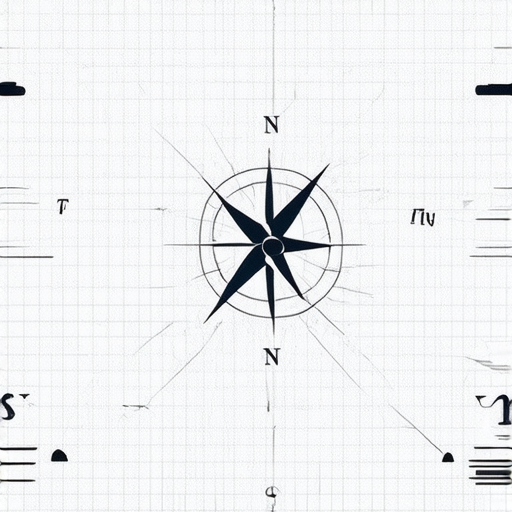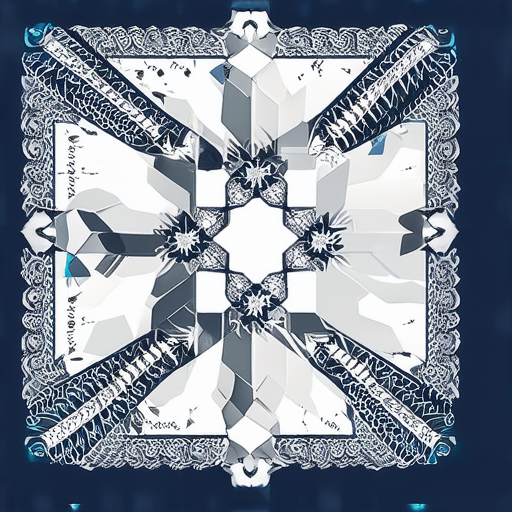Discover the ultimate source of inspiration for modern web designers looking to create stunning flat design websites. From its humble beginnings to its current status as a timeless design trend, flat design has captivated audiences worldwide with its simplicity, elegance, and versatility. Whether you’re a seasoned designer or just starting out, this comprehensive guide will take you on a journey through the history, principles, and best practices of flat design, showcasing the most inspiring flat design websites and offering expert tips to help you create your own breathtaking designs.
Flat Design – An Introduction
Flat design is not entirely new and has been inspired from 3 existing forms of art: The Swiss Style (or International Typographic Style), Bauhaus and Modernism.
What Influenced Flat Design?
- The Swiss Style developed in the 1920s, emphasized simplicity and clarity in typography and layout.
- Bauhaus, founded in Germany in 1919, also contributed to the development of flat design.
- Modernism, a broader cultural and artistic movement, emerged in the late 19th century, rejecting traditional forms and conventions in favor of innovation and experimentation.
The Swiss Style, developed in the 1920s, emphasized simplicity and clarity in typography and layout. Its influence can be seen in the use of clean lines, minimal ornamentation, and a focus on functionality.
This style was pioneered by designers such as Josef Müller-Brockmann and Max Bill, who sought to create a new kind of visual language that would be accessible to everyone.
Role of Scandinavian Design in Flat Design
Scandinavian design has also played a significant role in shaping the principles of flat design.
- Scandinavian design emphasizes simplicity, functionality, and usability.
- Designers such as Dieter Rams and Arne Jacobsen have contributed to the development of flat design.
By drawing on the principles of the Swiss Style, Bauhaus, and modernism, designers have created a visual language that is both aesthetically pleasing and effective.
Flat Design: A Modern Approach to Web Development
Flat design is a web development approach characterized by simplicity, minimalism, and a focus on functionality.
Key Characteristics:
- Flat design often employs a limited color palette, which helps to maintain visual consistency throughout the website.
- Simple shapes and icons rely heavily on conveying meaning and adding visual interest.
- Easy-to-read fonts and clear typography are essential elements of flat design, making it easier for users to navigate and engage with the website.
- Minimal interactions between the user and the website create a seamless and intuitive experience.
Benefits:
- Flat design creates a clean and minimalist environment that allows users to focus on the content and purpose of the website.
- By reducing visual clutter and minimizing interactions, flat design enables users to quickly find what they need and complete tasks efficiently.
- A well-designed flat website can effectively communicate a brand’s values and personality, helping to establish a strong online presence.
Best Practices:
- While flat design emphasizes simplicity, high-quality images can still play a crucial role in adding visual interest and depth to the website.
- With the majority of internet users accessing websites through mobile devices, it’s essential to ensure that flat design websites are optimized for smaller screens.
- Typography can greatly impact the overall aesthetic and readability of a flat design website, so don’t be afraid to experiment with different font combinations and styles.

Flat Design: Is It Still Popular?
Flat design has been a staple in web design since its inception, characterized by simple shapes, bold colors, and minimal ornamentation. Despite being a popular choice among designers, many have questioned whether flat design remains relevant in today’s digital landscape.
Pros of Flat Design
Flat design offers several benefits, making it a preferred choice for many designers:
- Flat design provides a clean and modern aesthetic, which is perfect for contemporary websites and applications.
- With a limited color palette and simple shapes, flat design is relatively easy to implement, even for novice designers.
- Flat design promotes consistency throughout a website or application, creating a cohesive user experience.
Cons of Flat Design
While flat design has its advantages, it also has some drawbacks:
- Flat design can lack expressiveness, making it difficult to convey complex ideas or emotions.
- Overusing flat design elements can result in a visually unappealing design.
- Flat design often lacks depth, making it challenging to create engaging and interactive experiences.
Future of Flat Design
Despite its limitations, flat design remains a popular choice among designers. However, it’s essential to consider the evolving needs of users and the ever-changing landscape of web design.
Recent Trends in Web Design
In recent years, web design has shifted towards more immersive and interactive experiences. Some notable trends include:
- Minimalist designs have gained popularity, emphasizing simplicity and clean lines.
- Dark mode has become increasingly popular, providing a unique visual experience for users.
- Accessibility has become a top priority, with designers incorporating features that cater to diverse user needs.
Flat Design: A Movement Popularized by Microsoft
Flat design, a visual design approach that emerged in the early 2000s, has gained significant attention in the tech industry. Microsoft played a pivotal role in popularizing this trend, introducing a new flat and minimalist style in their products around 2010.
Key Milestones
- Early 2000s: Microsoft begins experimenting with flat design principles in their products.
- 2010: Flat design gains widespread adoption in mobile interface design for Windows Phone 7.
- 2012: Apple adopts flat design in iOS 6, further solidifying its presence in the tech world.
Flat design has had a profound impact on the way digital products are designed. Its emphasis on simplicity, minimalism, and intuitive user interfaces has influenced numerous industries, including web development, app design, and even graphic design.
Notable Examples
* Windows 8: Microsoft’s 2012 operating system marked a significant shift towards flat design, featuring a bold new look and feel.
* iOS 7: Apple’s 2013 update introduced a sleek, flat design language that would become synonymous with the brand.
* Google Material Design: This design language, developed by Google, draws inspiration from flat design principles, emphasizing simplicity and consistency across various platforms.
Criticisms and Controversies
While flat design has been praised for its simplicity and elegance, some critics argue that it can lack visual interest and depth. Others have raised concerns about the potential negative impact on accessibility, particularly for users with visual impairments.
Recent Developments
In recent years, flat design has evolved to incorporate new elements, such as subtle animations and gradients. While these additions aim to enhance the user experience, they also raise questions about the balance between aesthetics and functionality.
Sources
- “The Evolution of Flat Design” by Smashing Magazine
- “Flat Design: A Study of its Impact on User Experience” by UX Collective
- “The Future of Flat Design” by Design Milk
Flat Design: A Shift Towards Simplicity and Usability
Flat Design emerged as a response to the limitations of traditional design approaches, which often relied heavily on visual hierarchy and depth cues. By stripping away unnecessary elements and focusing on simplicity, designers aimed to create a more intuitive and user-friendly experience.
At Its Core, Flat Design is Rooted in the Concept of Usability
Proponents argue that our brains are capable of recognizing patterns and shapes with minimal visual cues, rendering complex designs unnecessary. This approach prioritizes clarity over complexity, allowing users to focus on the essential elements of an interface.
Key Principles of Flat Design
- Minimalism: Eliminating unnecessary elements and focusing on simplicity
- Consistency: Establishing a consistent visual language throughout an application or website
- Color: Using color effectively to draw attention and convey meaning
- Typography: Selecting typography that is clear, readable, and consistent
Benefits of Flat Design
Flat Design promotes a more intuitive and user-friendly experience, leading to increased engagement and productivity. Consistent branding and visual identity contribute to a stronger brand image, while simplified designs make it easier for users with disabilities to navigate digital products.
Notable Examples of Flat Design
- Microsoft Office Online
- Google’s Material Design
- Apple’s iOS and macOS Interfaces
Conclusion
Flat Design has revolutionized the way we interact with digital products, offering a more streamlined and user-friendly experience. By embracing simplicity and consistency, designers have created interfaces that are both visually appealing and accessible.
Flat Design: A Brief History and Evolution
Flat design has its roots in the International Typographic style, which emerged in the 1950s and 1960s.
Key Characteristics of Flat Design:
- Minimal use of shadows and gradients
- Simple, bold typography
- Limited color palette
- Emphasis on negative space
Evolution of Flat Design:
Apple’s iPhone 4 and iPad introduced flat design elements, such as a lack of shadows and subtle animations, in 2009-2012.
Microsoft’s Windows 8 and Google’s Material Design further popularized flat design, incorporating it into various applications and platforms, in 2013-2015.
Flat design continues to evolve, with designers incorporating new techniques and technologies to create visually appealing and user-friendly interfaces, starting from 2016-present.
Notable Examples of Flat Design:
- Apple’s iOS and macOS operating systems
- Google’s Material Design guidelines
- Microsoft’s Windows 10 interface
- Amazon’s Alexa virtual assistant
Influence of Flat Design:
Flat design prioritizes simplicity and ease of use, resulting in a more intuitive and engaging experience for users.
Flat design allows companies to establish a strong visual identity, differentiating themselves from competitors.
Flat design has influenced other design movements, such as minimalism and skeuomorphism-free design.
Challenges and Limitations of Flat Design:
Flat design can result in a two-dimensional appearance, lacking the depth and dimensionality of other design styles.
Flat design’s minimalist approach can limit its ability to convey complex information or emotions.
Overreliance on flat design can lead to visual fatigue and a lack of diversity in design.
Best Practices for Implementing Flat Design:
Balance simplicity with complexity to create a visually appealing and functional interface.
Utilize color to draw attention, create contrast, and communicate information effectively.
Prioritize user needs and goals when designing with flat design principles.
What Influenced Flat Design?
A. History of Minimalism in Design
Flat design has its roots in minimalist design, which emerged in the 1950s and 1960s. This style emphasized simplicity, clean lines, and a limited color palette. The influence of digital technology on design trends played a significant role in shaping flat design.
B. Role of Scandinavian Design in Flat Design
Scandinavian design, particularly from countries like Sweden and Norway, contributed significantly to the development of flat design. Designers like Dieter Rams and Arne Jacobsen popularized flat design principles through their work.
Understanding Flat Design Websites
A. Definition of Flat Design Website
Flat design websites are characterized by their simple, intuitive, and visually appealing interfaces. They often feature bold colors, geometric shapes, and a lack of clutter.
B. Importance of Visual Hierarchy in Flat Design
The visual hierarchy plays a crucial role in flat design, guiding users through the interface and emphasizing key elements. A well-designed visual hierarchy helps to create a cohesive and user-friendly experience.
Flat Design Examples and Inspiration
A. Famous Flat Design Websites
Some notable examples of flat design websites include Airbnb, Spotify, and Dropbox. These platforms showcase the effectiveness of flat design in creating engaging and user-friendly interfaces.
B. Flat Design Images and Photography
Flat design images often feature bold colors, geometric shapes, and a minimalist aesthetic. Photographers like Andreas Gursky and Thomas Struth have contributed to the visual language of flat design.
Constraints and Limitations of Flat Design
A. Challenges of Implementing Flat Design
One of the challenges of implementing flat design is striking a balance between minimalism and functionality. Designers must carefully consider the needs of their users and ensure that the interface is both aesthetically pleasing and usable.
B. Balancing Minimalism with Functionality
Minimalism is essential in flat design, as it allows designers to focus on the core elements of the interface and eliminate unnecessary clutter. However, it’s equally important to ensure that the design is functional and easy to use.


0 Comments